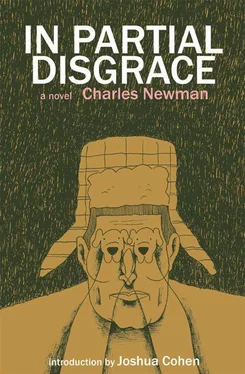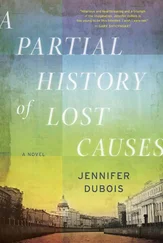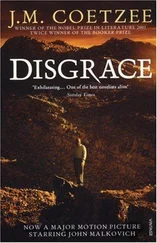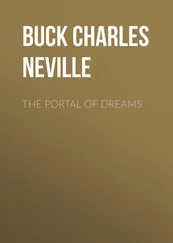When an Astingi girl approached puberty, she was taken by the older women to a central repository in the forest, and given paint to color their village houses as she would, a collection of deep-hued pastels which would give even a color-blind bear pause. In the late autumn, when the tribe returned from the mountains, they found the village houses glowing like jewels, and in each second-story window, chin in cupped hands and elbows on the sill, a young woman perusing the passing young men for her life companion.
Once betrothed, the compromises with the chosen men were worked out rationally. The women controlled the daily and generational markets, the shortest- and longest-term trading, thirty-day accounts and thirty-year mortgages, while the gentlemen were allowed to work off their slash-and-burn instincts in the large intervening middle-distance, an arrangement which apparently forestalled and managed crises better than in any of those bloody pockets of history that surrounded them.
You could tell an Astingi across a field, no matter how he was dressed, simply by his self-sufficient and dignified posture, punitive on the one hand, protective on the other. Their manners were based upon an ideal manliness so palpable they could dispense with any show of warrior virtues. Their survival was based apparently upon their absolute unwillingness to become a folk , their belief that folk wisdom is always wrong, those out-of-the money bets that tree moss reveals true north or that menses are triggered by asparagus. No faux naïve embroidery or window boxes full of one-dimensional pansies for them, no feast days (every day is a feast day), no hopping dances or gravitas processions, no moldy costumes in the attic. As a people they prided themselves not so much on their inclusiveness but on their aerodynamics.
In the summers the men would go to the mountains with their flocks and dogs. In the spring floods they would return to play pirate for a month on six-inch seas. In the fall, they would hunt and kill their feral pigs. In the short winter, they would renew fierce, earsplitting connubial relations with their women, who had come to ovulate every six months. While the men were off grazing or fighting, the women moved their entourage from town to town, reopening new ones or closing down old ones — it was all the same to them. And when they fought, the women and children were put in the first rank. If you have never heard an Astingi woman’s war cry, you have missed the human drama.
The Astingi theology was as vague as Ainoha’s peculiar status within it. All that can be said with certainty is that their bucolic and commonsensical existence had been disturbed in the thirteenth century by the Pope, who, for reasons unclear, sent them a crown as a bribe, and granted them apostolic status. They associated the crown’s crude craftsmanship with their tormented past, a kind of aesthetical pounding on the table which they had had enough of, and filed it away respectfully. Over the next few centuries, as the tribes further intermingled, Jesus and the saints coexisted happily with the devils and fairies, the forest pig and totem — and as a hedge on the safe side, white horses were still occasionally sacrificed on holidays. On every crossroads appeared the vulvar crèche with a sweating black Madonna, and while the rest of Europe cremated itself in the throes of feudal dynasties and religious wars, throughout the Dark Ages the Astingi were especially healthy and prosperous.
It cannot be said that they subscribed to the church in either its eastern or western forms. Of the Christians it was noticed that those who preached the Gospel of Love the loudest tended most piteously to destroy those reluctant to subscribe. And as for those who developed a principled resistance to the Judeo-Christian order (with its facile hyphen) those eastern cults which promised a utopia on this earth as an attractive heresy, it was noticed that they tended to show up at functions without being invited, manifesting an undifferentiated rudeness which even in those quarters where it most succeeded, made every simple social exchange a kind of torture. They knew all accounts of fallen warriors to be made up or worse. And they were suspicious of a vital oral tradition which could turn anything into a kind of pathetic, faded inner experience.
So it cannot be said exactly that the Astingi retained their loyalties to paganism. To be fair, they embraced the rituals of both churches — the perfume and sensuality of the East, without its liturgy and hierarchy, as well as the emotional asceticism and graphomania of the West, without its odd texts and even odder foreign policy. The Cannonians and the Astingi went to the opera on Friday nights and sang the same arias on Sunday to Bible verses. The services at Muddy St. Hubertus had the mysticism and iconography of the orthodox, but the music of the gothic, dispensing with tempo markings and adding thirty more characters to the Latin alphabet of the psalters, as well as an inscription over the altar: “All things are three.”
What is the meaning of this creed beneath the inverted pyramid, the Astingi mystery, “All things are three”? It means, as far as I can see, the opposite of the hypostatic trinity, which promises only infinite regress. It means there is no unity, nor holy relation between the three, only contingency. For the human mind is capable of holding within itself only two beginnings, and can merely acknowledge a third, like a man waving his cap at a thundercloud. The Astingi went as far as they could go, acknowledging the Virgin Mary and the Holy Ghost, but not the Father and the Son — and of the four, they certainly found it easiest to accept the Ghost. After all, one can believe in the end of the credo “Look for the resurrection of the dead and the life of the world to come” without even considering all that hard-to-follow persiflage which precedes it. Does it really matter who begot whom? “Skip to the end, my sweet,” the Astingi proverb goes, and that is what my mother sang to me. The Astingi kiss is a triple kiss, plus or minus one makes all the difference, one on the left check, one on the right, and the third where you will. One’s feelings about a deed are of more interest than the fact of it; that is the Astingi philosophy. The Astingi’s only essentially religious idea, as far as I could tell, seemed to be that Europe’s biggest problem was too much Christianity — even in Cannonia, where Jews played soccer, Muslims made moonshine, and the Catholics were tougher than the Turks.
The great appeal of paganism, after all, is that it was not necessary to be loyal to it. It is simply an attractive guess at matters hidden from history requiring neither laws nor tithes, whose basic tenet remains that it is not worth dying or killing for. In any case, the oak trees were disappearing at a fantastic rate, and those little spirits, elves, and fairies reminded the Astingi too much of their own vulnerability. While one of the most attractive aspects of nature worship was its absence of clergy, they came to notice among their own self-appointed druids a certain smug sanctimony and conformity, which would infect for all time all progressives who opposed the prerogatives of Christendom. So while they recognized the lack of consistency in their own beliefs, they nevertheless came to miss the attractive mixture of pagan sexes, the little shrinelets in the forest, the lapidary and contradictory stories, the expansive gestures and the short parades, not to mention the grand entertainment of lesser deities competing for social standing with all their human foibles. This company of competing gods not only seemed to accord more to the reality of things, but also encouraged a warm responsiveness, rather than the wail of the saved. To replace this extended family of overlapping authority with one stout fellow who no doubt had his thrilling moments, but seemed to have taken on rather too large an entity to administer, encouraged a kind of immaturity where enforcement was concerned. Why replace this drama of contesting rulers with a weak omnipotence? Why cut down a forest and replace it with a lone tree with a single veinous leaf? The Astingi were thus rather pagans by default. And gradually their taste for slitting the throat of a white horse abated, one of those rare periods of history where the executioner does not willingly step forward.
Читать дальше












